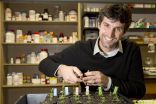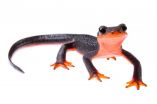(Press-News.org) Many physicians are pushing back against or debating new requirements for maintaining medical board certifications, which affect more than 250,000 physicians nationwide. Now, a new study by UC San Francisco and Stanford University researchers concludes that the cost of implementing the most recent requirements will be an estimated $5.7 billion over the next 10 years.
In their study, published online on July 27, 2015, in the Annals of Internal Medicine, the researchers found that most costs of the latest maintenance-of-certification (MOC) requirements implemented for medical specialties by the American Board of Internal Medicine (ABIM) arise due to the time required for physicians to fulfill requirements, such as completing online modules, rather than the fees payable to ABIM.
The researchers said that the high costs of the program highlight the need for higher-quality evidence that it actually will lead to improved clinical outcomes for patients.
"This is a first attempt to gauge the costs of implementing the revised recertification programs, so that researchers can begin to better evaluate costs and benefits of this large investment in physician education in comparison with alternative strategies for improving healthcare quality," said senior author Dhruv Kazi, MD, MSc, assistant professor in the Department of Medicine, Department of Epidemiology and Biostatistics, and the Center for Healthcare Value at UCSF. "Ultimately, we want to know whether these requirements offer a good return on investment for society."
The researchers developed a mathematical simulation model of the entire ABIM-certified workforce of internists, hospitalists and internal medicine subspecialists in the United States and estimated total societal costs over 10 years - including ABIM fees and the monetary value of physician time spent on fulfilling MOC requirements. They calculated that costs to individual physicians would average $23,607 over 10 years, with costs in some subspecialties exceeding $40,000. Subspecialists face higher costs than general internists in the program, primarily because they take additional certification examinations that generate more fees and a greater time outlay.
"We found that 9 out of every 10 dollars in MOC costs were related to the program's demands on physician time," said Alexander Sandhu, MD, the lead author of the study and the Veterans Affairs Health Services Research and Development fellow at the Center for Health Policy/Center for Primary Care and Outcomes Research at Stanford University, and a clinical instructor for the Department of Medicine. "We estimate that ABIM MOC will cost 33.7 million physician-hours over 10 years. Efforts to reform MOC and lower its costs should focus on making the most efficient use of physician time."
Kazi said, "The time required to complete testing modules might in some cases otherwise be dedicated to patient care, or to participating in grand rounds or other activities intended to keep physicians attuned to best practices where they work."
Study co-author R. Adams Dudley, MD, MBA, director of the Center for Healthcare Value at the Philip R. Lee Institute for Health Policy Studies at UCSF, said a comprehensive evaluation of the policy should consider both costs and benefits.
"Downstream improvements in the quality or efficiency of care resulting from participating in MOC may offset some of these upfront costs," Dudley said. "However, we found no high-quality studies examining the effect of the increased requirements on clinical or economic outcomes, so we were unable to model potential benefits."
The ABIM was created early in the last century to develop uniform standards, and rigorous board certification exams have long been the norm, but it was only in 1990 that the ABIM began requiring recertification for new physicians. Physicians who were board-certified earlier were grandfathered in and have not been required to meet any newer requirements.
With medical advances accelerating, the ABIM decided a few years ago to further bolster requirements intended to keep physicians up-to-date, changing its once-every-10-years MOC program to a more continuous one and gradually increasing the amount of testing required. In 2014, the ABIM again increased the requirements and fees. Faced with mounting criticism from physicians and specialty societies, the ABIM temporarily suspended some of the new requirements in February 2015 but retained the increased fees and number of modules. It's these latest requirements that the researchers evaluated in the new Annals study.
The ABIM also announced in February that it was going to work closely with physicians and professional societies to reform MOC.
"Our hope is that our estimates of the costs of MOC and, critically, the drivers of these costs, will help inform these upcoming consultations about MOC reform," Kazi said.
INFORMATION:
UCSF and the Department of Veterans Affairs funded the study, but the findings and conclusions do not necessarily represent their views.
UC San Francisco (UCSF) is a leading university dedicated to promoting health worldwide through advanced biomedical research, graduate-level education in the life sciences and health professions, and excellence in patient care. It includes top-ranked graduate schools of dentistry, medicine, nursing and pharmacy, a graduate division with nationally renowned programs in basic, biomedical, translational and population sciences, as well as a preeminent biomedical research enterprise and two top-ranked hospitals, UCSF Medical Center and UCSF Benioff Children's Hospital San Francisco. Please visit http://www.ucsf.edu.
Athens, Ga. - An international team of researchers led by scientists at the University of Georgia has discovered how parasitic plants, which steal their nutrients from another living plant, evolved the ability to detect and attack their hosts. Their findings, published recently in the journal Science, could lead to new techniques to control the thieving weeds.
There are thousands of parasitic plant species, but the most burdensome for humans are those that infiltrate farmland and destroy crops. Parasite infestations reduce crop yields by billions of dollars each year, ...
In cells with latent HIV infection, the virus is dormant, and such cells are therefore not attacked by the immune system or by standard antiretroviral therapy. To eradicate the virus from the human body and truly cure a patient, reservoirs of latently infected cells need to be activated and eliminated "the so-called "kick-and-kill" approach. Two studies published on July 30th in PLOS Pathogens report encouraging results on the use of a combination of several drugs to efficiently reactivate HIV in cells with latent infection.
Please contact plospathogens@plos.org if you ...
A deadly fungus identified in 2013 could devastate native salamander populations in North America unless U.S. officials make an immediate effort to halt salamander importation, according to an urgent new report published today in the journal Science.
San Francisco State University biologist Vance Vredenburg, his graduate student Tiffany Yap and their colleagues at the University of California, Berkeley and the University of California, Los Angeles say the southeastern United States (particularly the southern extent of the Appalachian Mountain range and its southern neighboring ...
Scientists at Columbia University's Mailman School of Public Health and the School of Public Health of Li Ka Shing Faculty of Medicine at the University of Hong Kong have shown for the first time that it is possible to predict the timing and intensity of influenza outbreaks in subtropical climates like Hong Kong where flu seasons can occur at different times and more than once during a year. Results appear online in the journal PLOS Computational Biology.
Since the 2013-2014 season, the Mailman School scientists have published weekly regional flu forecasts for over 100 ...
Worldwide, influenza kills an estimated 250,000 to 500,000 people each year. A new study publishing in PLOS Computational Biology has shown that for the first time it is possible to predict the timing and intensity of influenza outbreaks in subtropical climates, such as Hong Kong, where flu seasons can occur at irregular intervals year-round.
The team of scientists from Columbia University's Mailman School of Public Health and the University of Hong Kong used data from a network of 50 outpatient clinics and laboratory reports in Hong Kong from 1998 to 2013 as a test case ...
This news release is available in Japanese.
During the first ever landing of a probe on a comet, the world held its breath as Philae survived a bouncy landing on comet 67P/Churyumov-Gerasimenko on November 12, 2014. This special issue of Science highlights seven new studies that delve further into the data that has been transmitted back by Philae. In a detailed account, Jens Biele et al. describe the critical moments where Philae descends on 67P, only to bounce off the soft, intended landing area and finally settle on a harder surface farther away. Analysis ...
This news release is available in Japanese.
By studying how water striders jump on water, Je-Sung Koh and colleagues have created a robot that can successfully launch itself from the surface of water. As the team watched the water strider jump on water surfaces using high-speed cameras, they noticed that the long legs accelerate gradually, so that the water surface doesn't retreat too quickly and lose contact with the legs. Using a theoretical model of a flexible cylinder floating on liquid, the authors found that the maximum force of the water striders' legs is always ...
This news release is available in Japanese.
The international pet trade threatens to spread a deadly fungal infection to North America's rich wild salamander population and must be frozen, according to the authors of this Policy Forum. Batrachochytrium salamandrivorans (Bsal) is a highly virulent, often fatal fungus that infects salamanders, and there is no effective way to control it after it infects a wild population, say Tiffany Yap and colleagues. It is theorized that Bsal started in Asia and spread to wild European salamanders via the international pet ...
SAN FRANCISCO, CA - July 30, 2015 - A study released today at the Society of NeuroInterventional Surgery 12th Annual Meeting in San Francisco, California, indicates that strict adherence to two commonly-used tools to weigh the risk of treating unruptured aneurysms may not prevent the majority of morbidity-mortality outcomes associated with ruptured intracranial aneurysms. Thus, the International Study of Unruptured Intracranial Aneurysms (ISUIA) criteria and the PHASES score require additional research to determine their effectiveness.
Published in 2003, the ISUIA study ...
Boston, MA -- New research from Harvard T.H. Chan School of Public Health describes a molecular mechanism that helps explain how obesity-related inflammation can lead to type 2 diabetes. The findings describe a surprising connection between two molecular processes that are known to be involved in the development of metabolic disease--inflammation and endoplasmic reticulum (ER) dysfunction--and suggest that targeting this connection could aid in the development of new therapies.
The study will be published in the July 31, 2015 issue of Science.
Specifically, the researchers ...




